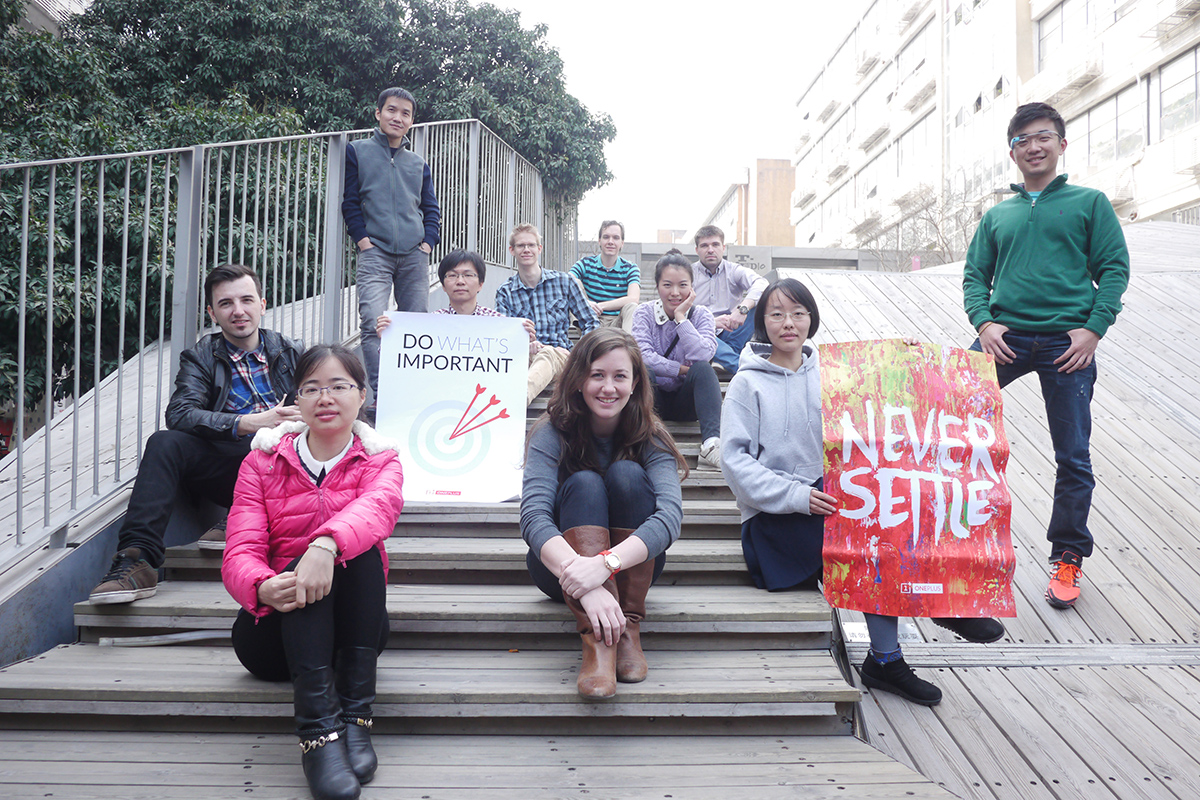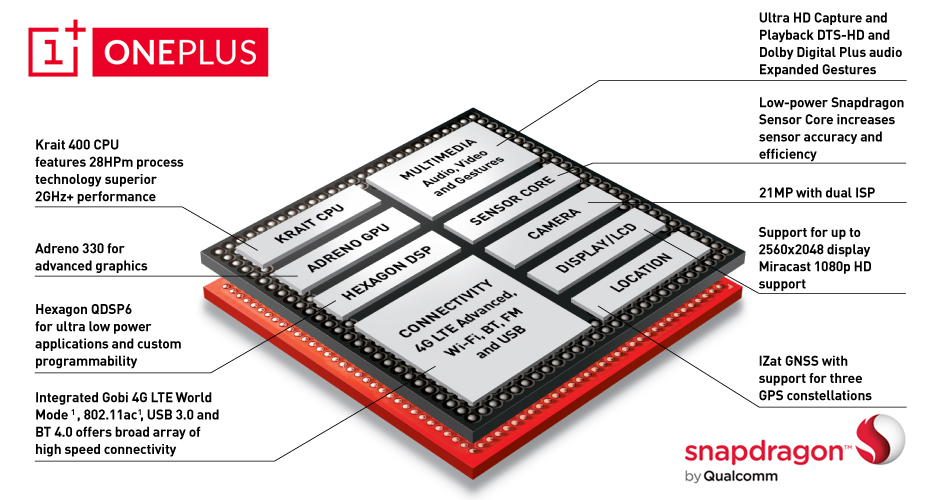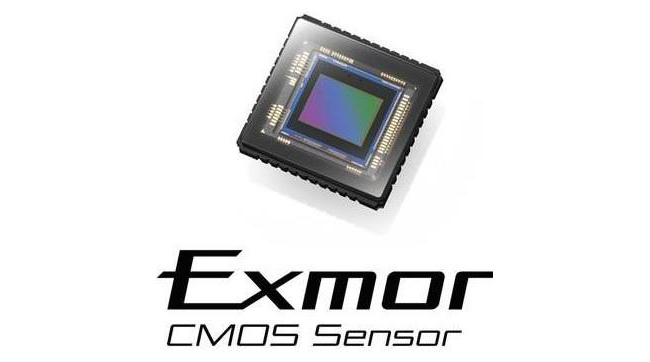OnePlus Interview: CyanogenMod & Hardware Design Details
Check out our final part of our interview with Carl Pei, Director of OnePlus Global, where he talks in more detail about the hardware specs and software of the One.
Hardware Specifications of the OnePlus One
Tom's Hardware: You announced last week that you are going to be using the Snapdragon 800 SoC for the OnePlus One, and Peter Lau explained your reasoning for choosing this chip in his forum post last week – it's available now and will provide excellent performance for the One. I wanted to ask if you can be more specific as to what variant of the Snapdragon 800 you'll be using in the OnePlus One? There seems to be a lot of confusion in the market as to the different versions of 800 and now 801, in that different variants offer different levels of performance while still being called the same name, which is confusing for consumers.
Carl Pei: We are going to be using the MSM8974AA for the OnePlus One, and the reasons why we choose the Snapdragon 800 are, as Pete said, for battery life, heat and availability. Up until MWC Qualcomm didn't even have a Snapdragon 801 – they just called the 800 variants AA, AB and AC. What we think happened is that because certain companies had to release new phones at MWC, the went Qualcomm and ask if they could make something new for them, or at least change the name of something you already have, so we can market it as something new, and that's why we think there is a lot of confusion.
TH: Aren't you concerned, though, that the AA variant of the Snapdragon 800 will seem slow by the time OnePlus One hits, since by the time you launch, there will be faster 800 AB and 801 devices available to buy?
CP: We aren't concerned about this. What we mean by the perfect smartphone is one that's great for day-to-day use. By leveraging the Snapdragon 800 platform, our users benefit from increased performance and power efficiency. Sure, we lost out on some marketing advantages, but the AB and AC chips provide little to no performance difference in real life conditions, while increasing heat and battery drain. This wouldn't have been a responsible choice for our customers.
TH: The second spec that you announced is the battery size of the OnePlus One, 3,100 mAh, which is a decent size for the size of the phone that you are making, and give it good battery life. However, you mentioned before that some users were saying that they wanted a 4,000 mAh battery. Would it have really compromised the size of the device by that much if you used a huge battery like that?
CP: A 4,000 mAh would have made the phone a brick. We are using a 'mystery technology,' that is a new type of technology that very few people have used before. We think it's a real shame that most Android phones can't make it past a day of use.
TH: You are using CyanogenMod, and traditionally, AOSP-based ROMs don't have as many power management features as the customized ROMs that vendors like Sony and Samsung put on their phones. The software on those phones let you customize how the phones use power in a very granular way, something that isn't found in stock Android. Are you going to add something to CyanogenMod that will give OnePlus One users more power management options?
Get Tom's Hardware's best news and in-depth reviews, straight to your inbox.
CP: We think that when OEM skins have these granular power controls, they often make users turn off certain features of the phone, and we think that deducts from the user experience. With the OnePlus One, we are just planning on providing really good day-to-day power management, right from the start of using the phone when the battery is full, rather than waiting for the battery to run low and then just turning off a bunch of features.
TH: The OnePlus One is going to have a 5.5-inch screen, which I think is the perfect size, especially if the physical dimensions of the phone can be similar to a 5-inch phone like the Nexus 5. Can you talk a little about why you chose that screen size, rather than perhaps going with a larger phablet-sized screen, or even a small screen.
CP: When we talked to our users, we found out that most people wouldn't want a phone with a screen bigger than 5 inches, because it becomes hard to hold. On the other hand, users want to maximize their screen real estate so they can see more of their content. By fitting a 5.5-inch screen in the body of a 5-inch phone, we can make the OnePlus One satisfy both of those user needs.
TH: Is there any reason you didn't go with a 2K display? Is it simply for cost and availability reasons, or does OnePlus believe that all those extra pixels are unnecessary on a 5.5" display?
CP: Our goal was never to create an unbalanced performance monster, but rather to create the best smartphone experience in day to day use. A QHD display drains 15-30% more power than a 1080p display, while being indistinguishable to most users. It would have been an irresponsible choice.
TH: I'm happy to see you are using a Japan Display Inc display, which is what HTC uses. They've always had the best mobile device screens, and I'm glad OnePlus will be joining them. Are there any other details about the screen you can share? Like, for example, is it going to be protected by Gorilla Glass 3, and will there be a high-sensitivity 'glove-mode?'
CP: JDI makes a lot of different display products, and size is not the only differentiating factor. For instance, the original Xperia Z used a really low quality JDI panel that would go white at a slight tilt. The display is the component users interact with the most and is not somewhere we'll cut costs on with the OnePlus One.
Operating System
TH: We can safely assume that the One will be running KitKat/CyanogenMod 11, correct? What has it been like to work so closely with the CyanogenMod team from the beginning of the design process? Has their input influenced any of the hardware choices you've made? Is building a device that brings out the best in stock/CM Android very different than one you would build a custom version of Android for?
CP: Yes, the One will run KitKat. Like always, it has been great working together with the guys at Cyanogen. We are working closely on this product with both sides providing ample input on design, hardware, as well as software issues. We've been listening to our users and are building a system that's thin, light and fast.
TH: Why did you decide to go with an OS which basically, apart from the few flourishes that CM has said will be in the One version, is the same user experience on any device that runs it? Why did you choose not to do a custom ROM, or build on say Color OS or MIUI to create software that's unique to the One that will showcase hardware features you have that other phones don't?
CP: Skins like TouchWiz and Sense don't provide real value to users. In 2013, Motorola made good choices with the Moto X, by providing a handful useful features that actually get used. This is something we're also doing with the OnePlus One. It will ship with a few unique and high quality features.
Camera
TH: While you can't talk specifically about the camera specs [since we interviewed him prior to the release of the camera specs], can you tell us what you think are the top three most important features that need to be in a mobile camera?
CP: The most important thing for a smartphone camera is that it's easy to take good photos with. To achieve this, it all comes down to high quality optics, sensor and software. There are no shortcuts.
TH: Is OnePlus planning on doing anything off-the-wall as far as the camera goes, like what Oppo did with the N1, or Nokia did with the Lumia 1020?
CP: No, what consumers want in a smartphone is a good solid camera, not product that is heavily focused around the camera or any of its specific features.
Read more: OnePlus Taps Sony to Provide 13MP Exmor Camera Sensor
Conclusion
TH: How many, and which markets will the OnePlus One initially launch in?
CP: We'll launch in over a dozen countries, but have yet to decide on the final list, as we're still looking at regulatory and logistical issues.
TH: Is OnePlus's business model going to be similar to that of Apple - one flagship device per product cycle, with perhaps the previous model staying on as a budget choice, or do you foresee OnePlus eventually offering a variety of devices in different form factors and screen sizes?
CP: Honestly, this is too early for us to say. What our future steps are will depend entirely on how successful we are with the OnePlus One. If the OnePlus One is successful, it will make sense for us to branch out into new product categories.
TH: Is there anything else you'd like to let our readers know?
CP: Come and say hi to us on our forums! We really value the feedback from users, and each post will be read by multiple staff members.
You can read part one of our interview with Carl here, and part two here.
The next milestone in the OnePlus One saga is March 19. Keep reading Tom's for the latest OnePlus news.
Follow Alex Davies @AlexBDavies. Follow us @tomshardware, on Facebook and on Google+.
-
aegisofrime I honestly doubt that the Snapdragon 801 will consume more power or produce more heat than the 8974AA. The AC parts are almost certainly the best binned parts, and will thus be running at lower voltages at equivalent frequencies to their AA and AB counterparts.Reply -
shriganesh Very funny. I don't think Sony is never a competitor to Oculus VR. Sony will never bring it's tech to PC. Where as Oculus is very open and have the advantage of being open. Where as many people are skeptical about Sony as they try to lock out everything else.Reply -
shriganesh Please ignore my previous comment. The new TH's comments system is very confusion!I am pretty sure I know what the mysterious battery technology is about and I think it has been used before by Samsung in it's Note 3. I am sure it is related to Lucid's Virtu (or it's mobile equivalent).Reply



